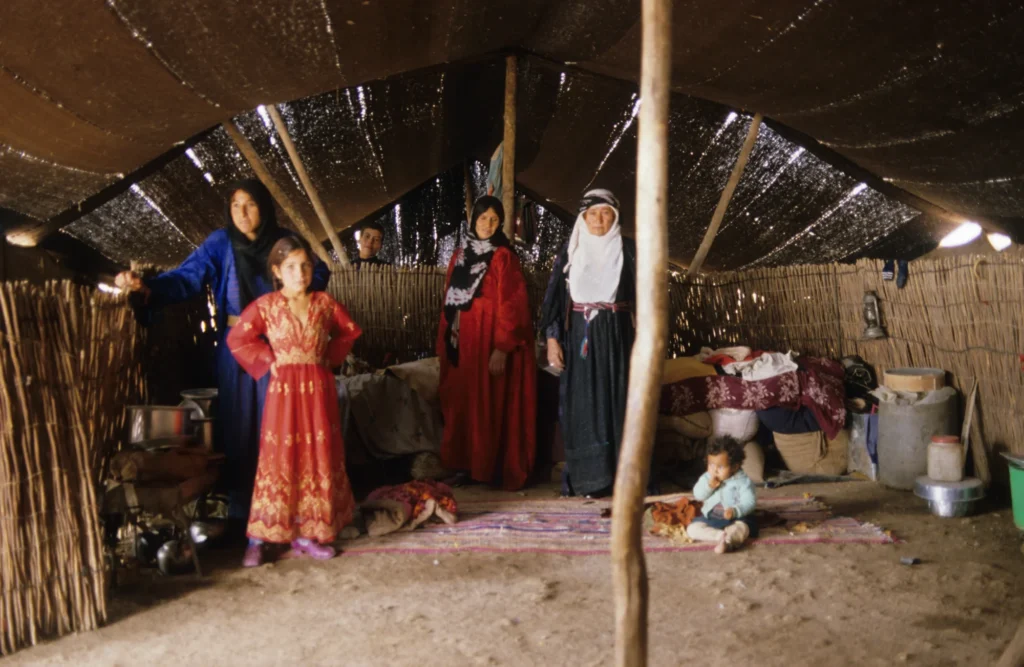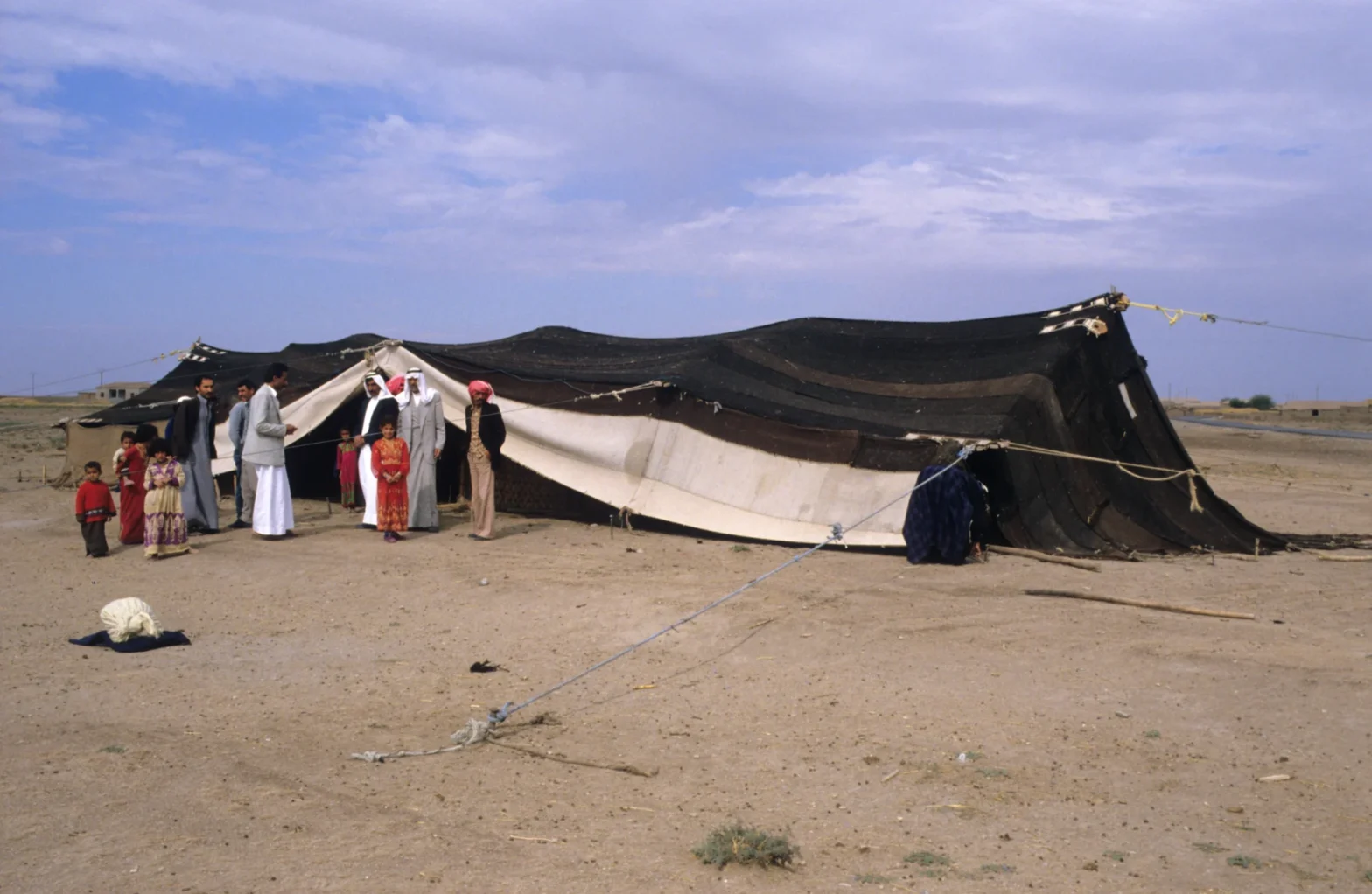by Estibaliz Sienra Iracheta
Over the eras, the prominence of textiles as economic goods holding social values has been continued and preserved, with culture being woven into time, sewn into peoples lives and traditions. In the Syrian desert, as in other remote cultural regions of the world, the relevance of textiles has been evident in the customs and costumes of the nomadic communities, also known as Bedouins in Arabic: the ones who inhabit the Badiyat al-Sham (the Syrian desert).
The term Bedouin historically refers to the small organised groups of livestock herding Arabs – nomadic Arabs – who descended from the ancient tribes of the Arabian Peninsula. Among these communities, textile production has become a primordial activity that allowed them to adapt and survive in the extreme weather and living conditions of the desert. Unlike the majority of peasants and city residents from Syria, the Bedouins conserved some of their traditional clothing, mainly because textiles cover practical and essential needs.
The traditional garment of Bedouin women and men consisted of a thawb, a foot-length long gown, with large winged-like sleeves made out of dark or white fabrics. These could be sewn by hand, by machine or bought in markets, and depending on the seasonal conditions, the robe could be either produced with cotton for everyday wear, with wool for winter cold seasons or with silk for ceremonial and religious events. In the latter, the thawb was also adorned with embroidery at the neckline, the sides and the chest. The gown could also be decorated using patchwork in different colours and materials and was usually girded with a belt.
The functionality of thawbs depended on the sleeves, which had different uses. For females, the sleeves served as an instrument which could “be tied behind the back in such a way that they form a bag for carrying shopping and (or) a young child” (Zernickel, p.158). For males, these sections of the gowns denoted power and determined status and/or rank. Men wore the sleeves down and freely when riding a horse; or rolled or tied in the back (Zernickel, p.159). Furthermore, the size and length of the sleeves could make it possible to differentiate the real Bedouins from the semi-nomads. Women also covered themselves with a coat or saya with wide sleeves and slits on the sides made with dark fabrics and decorated with appliqué ornaments in the neckline and the chest. Similarly to the thawb, the side slits on the coat could also be tied in front of the breasts to form a pouch to transport and carry objects. Men used to wear a similar saye but generally accompanied their costumes with a cloak or abaye, which was considered their most important piece of clothing.

Headdresses were also relevant garments in Bedouin attires. Women tended to use a margruna: a piece of cloth folded into a triangle, rolled and tied around the head to hold the veil or shambar kreshe. The veils were used to differentiate association to tribes and to distinguish married women from singles, who frequently used them as mediums “to flirt” (Kalter, p. 159). On the other hand, men used head scarfs which could be made with different colours and fabrics. These pieces were secured by wearing a head rope called agal, woven with goat hair. For Bedouins, headdresses were some of the most important elements of their costumes, since they could be used as protection against sandstorms, or to maintain body heat. Furthermore, by wearing them “unspoken messages – expressing love, interest, disregard, etc” (Zernickel, p. 160) could be transmitted.
Generally speaking, textiles and clothing are considered material expressions of oneself, and therefore, determine and relate to the social and cultural associations of people. Traditionally in Syria, as in other regions of the world, textiles could be used to recognize groups of people resulting in all kinds of emotions and reactions from a feeling of belonging to a reason to discriminate. Traditional textiles are disappearing at an accelerate rate because of the advancements of modernity, loss of interest among youths, deaths of older artisans, and westernized fashion trends. While modernisation and globalisation have brought all kinds of changes to the way people dress and express themselves, the relation of clothing and dress to ethno-lingual and religious congregation, and their prominence as definers of social roles still bear witness to the cultural diversity of Syria.
Estibaliz Sienra Iracheta is a Doctorate candidate in World Heritage Studies at Brandenburgische Technische Universität Cottbus, and is a promoter and expert in traditional textiles. Estibaliz previously worked in the Ruth D. Lechuga Folk Art Collection of the Franz Mayer Museum and as a teacher at the Textile Restoration Workshop of the National School for Conservation, Restoration and Museography of the National Institute of Anthropology and History of Mexico.

Very informative and educational article especially on arabic textiles.Thank you for this post.